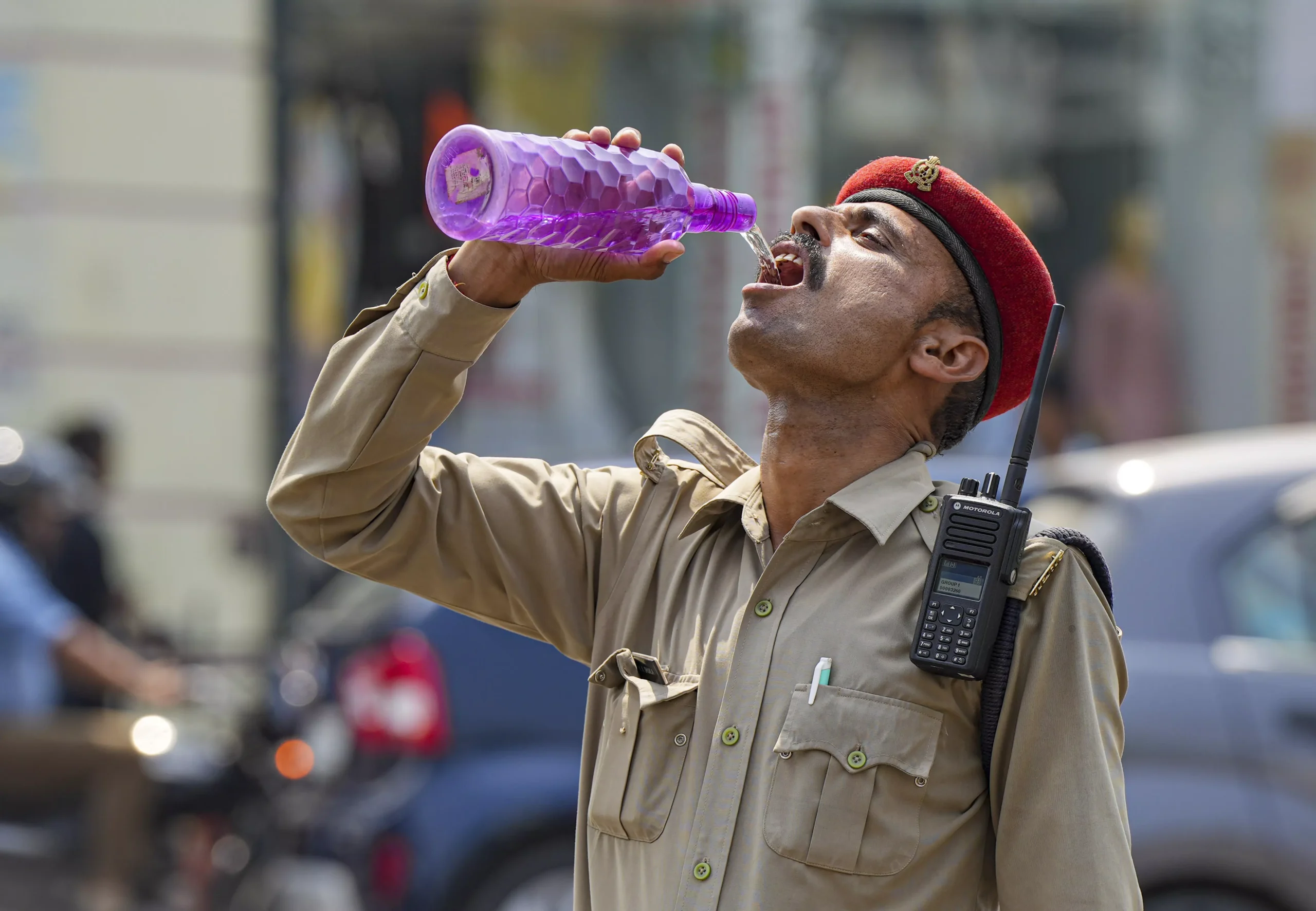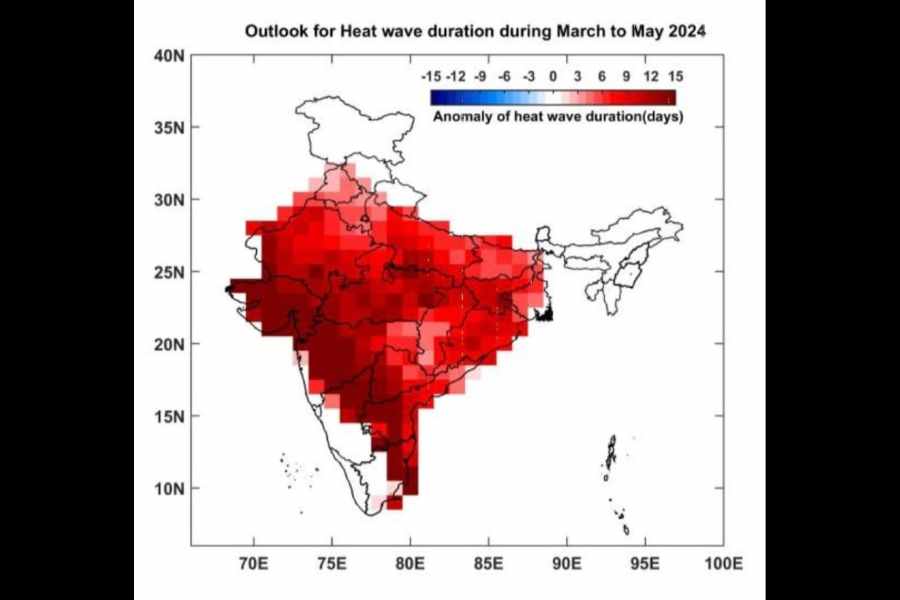Fiery Skies: How To Survive India’s Deadly Heatwaves

A policeman drinks water on a hot summer day, in Lucknow.
Source: PTI
As the scorching summer sun bears down on India, heatwaves have become a significant concern, affecting millions of people across the country. Dr. Krishna AchutaRao, Professor and Dean, Centre for Atmospheric Sciences, Indian Institute of Technology, Delhi, says, “The widespread, long-lasting, and intense heatwave conditions over India and many other parts of the world are the direct result of climate change caused by human emissions of greenhouse gases. There is an urgent need to take adaptation steps to control the rising global average temperatures; else, the result is in front of us.”
A heatwave is not just a spell of hot weather; it is a prolonged period of excessively high temperatures that can have severe health impacts and disrupt daily life. As temperatures soar beyond comfort, the sweltering heat poses a severe risk to public health and safety. Heatwaves in India are marked by dramatic deviations from normal temperatures, creating dangerous conditions that demand immediate attention and action. Knowing how to navigate these extreme weather events is crucial for survival, from understanding what defines a heatwave to decoding the color-coded warnings and implementing effective safety measures.
Understanding Heatwaves and Their Conditions
In India, a heatwave is declared when the temperature deviates by 4-5°C from the normal, creating an environment that can be challenging for even the healthiest individuals. Severe heatwave conditions occur when the deviation reaches 6°C or more. This can translate to temperatures soaring above 40°C in the plains and 30°C in the hills. These extreme conditions can quickly escalate from uncomfortable to life-threatening, especially for vulnerable populations such as the elderly, children, and those with pre-existing health conditions.
The warnings issued during heatwaves are color-coded to help the public understand the severity of the situation. On a normal day, temperatures remain close to the average, posing no immediate threat. However, when a heat alert is issued, it signals that heatwave conditions persist in isolated pockets for two days. A severe heat alert indicates that these conditions have lasted for two days or that a heatwave, even if not severe, has persisted for four days or more. The most critical warning is the extreme heat alert, which is issued when severe heatwave conditions persist for more than two days or when the total number of heatwave days exceeds six. These alerts are crucial for taking the necessary precautions to protect oneself and one’s family.
Regions Most Affected by Heatwaves

Probability forecast of heatwave events for March-May 2024
Sourced: Telegraph
Certain states in India, including Rajasthan, Uttar Pradesh, Gujarat, and parts of Maharashtra, are particularly susceptible to heatwaves. These regions frequently experience the most intense and prolonged periods of extreme heat, leading to widespread health issues and significant disruptions in daily activities. During these times, the health risks associated with heatwaves become alarmingly apparent, emphasizing the importance of awareness and preparedness.
The health impacts of heatwaves can be severe and even fatal. Heat cramps, characterized by swelling (edema) and fainting (syncope), are often accompanied by a fever below 39°C (102°F). More severe is heat exhaustion, presenting with symptoms such as fatigue, weakness, dizziness, headache, nausea, vomiting, muscle cramps, and excessive sweating. The most dangerous condition is heat stroke, where body temperatures soar to 40°C (104°F) or higher, potentially leading to delirium, seizures, or coma. Heat stroke is a medical emergency that requires immediate attention to prevent fatal outcomes.
Staying Safe During Heatwaves
To combat the dangers of heatwaves, it is essential to take proactive measures. Avoid outdoor activities, especially between 12:00 noon and 3:00 p.m., when temperatures are at their peak. Wear lightweight, light-colored, loose-fitting cotton clothing to stay cool and use protective items like sunglasses, hats, or umbrellas when outdoors. It’s crucial to stay hydrated by drinking plenty of water and avoiding beverages that can dehydrate the body, such as alcohol, tea, coffee, and carbonated soft drinks. Instead, opt for hydrating drinks like lassi, torani (rice water), lemon water, and buttermilk.
Ensure that animals are kept in the shade and provided with ample water. Keep your home cool by using curtains, shutters, or sunshades, and open windows at night to let in cooler air. Simple actions like these can significantly reduce the risk of heat-related illnesses.
As the heatwave season approaches, preparation is key. Equip yourself with essentials like a water bottle, an umbrella or hat, a hand towel, a hand fan, and electrolyte or glucose solutions to maintain hydration. By staying informed and taking the necessary precautions, you can navigate the scorching summer months safely and effectively.
India’s heatwaves are not mere inconveniences but deadly phenomena that demand our utmost attention and preparedness. As temperatures continue to soar, the stakes have never been higher. This summer, as the heatwave season approaches, arm yourself with knowledge, stay vigilant, and take proactive steps to protect yourself and your loved ones. The blazing sun may be relentless, but with the right precautions, you can outsmart the heat and stay safe. Remember, surviving a heatwave is not just about endurance—it’s about making informed choices that ensure you emerge unscathed from nature’s fiery test. Stay cool, stay safe, and take control of your health in the face of India’s unforgiving heat.

